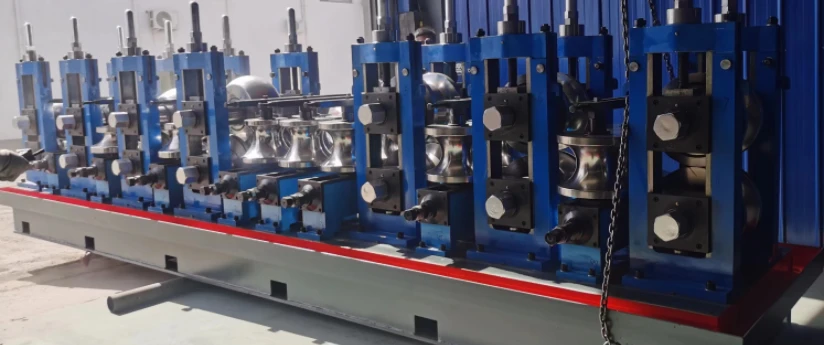Horizontal Crimping Equipment for Efficient and Precise Wire Termination Solutions
Understanding the Horizontal Crimping Machine A Comprehensive Overview
In today's manufacturing landscape, efficiency and precision are paramount, especially in industries that require extensive wire processing. One pivotal machine that has gained popularity in these settings is the horizontal crimping machine. Designed for optimal performance, this equipment plays a vital role in the assembly of various components, particularly in the automotive, electronics, and telecommunications sectors. This article delves into the workings, advantages, and applications of horizontal crimping machines.
What is a Horizontal Crimping Machine?
A horizontal crimping machine is a specialized device used to create secure and permanent connections between wire terminals and connectors. Unlike vertical crimping machines that operate in an upright position, horizontal machines typically feature a flat surface on which materials are placed and processed. This design allows for easier handling and better visibility of the crimping process.
How Does It Work?
The operation of a horizontal crimping machine involves several key components the crimping die, feeding mechanism, and control system.
1. Crimping Die The crimping die is the heart of the machine, where the actual crimping takes place. It shapes the terminal as it compresses around the wire to create a strong mechanical connection. The choice of die is crucial and varies based on the type of connector and wire gauge.
2. Feeding Mechanism Many horizontal crimping machines come equipped with automatic feeding mechanisms. These systems ensure that wires and connectors are fed into the crimping area at a consistent rate, significantly enhancing productivity and reducing manual labor.
3. Control System Modern machines are often equipped with advanced control systems that allow operators to set specific parameters for crimping, such as pressure, speed, and cycle time. These features not only improve consistency but also provide valuable data analytics for quality control.
Advantages of Horizontal Crimping Machines
There are several advantages to using horizontal crimping machines in production environments
horizontal crimping machine

- Efficiency With the ability to process multiple wires and connectors in a single cycle, horizontal crimping machines significantly reduce production times compared to manual crimping methods.
- Precision The automated features of these machines ensure that each crimp is uniform and meets strict quality standards, minimizing errors and the likelihood of product failure.
- Ease of Use The horizontal design allows operators to easily access the work area, making the setup and maintenance of the machine simpler compared to vertical models.
- Versatility Horizontal crimping machines can be adapted for various applications, including different wire sizes and connector types, making them a valuable asset in diverse manufacturing settings.
Applications of Horizontal Crimping Machines
Horizontal crimping machines find utility across several industries
- Automotive Industry In automotive manufacturing, these machines are essential for creating reliable connections in wiring harnesses, which are critical for vehicle electronics, lighting, and power distribution systems.
- Electronics Manufacturing For electronic devices, precise and secure crimping is vital. Horizontal crimping machines are used to assemble connectors used in circuits, ensuring proper function and longevity.
- Telecommunications In the telecommunications sector, these machines are employed to create connections in network cables and other infrastructure, where high reliability is essential for uninterrupted service.
Conclusion
The horizontal crimping machine is a cornerstone technology in modern manufacturing, combining efficiency, precision, and versatility. As industries increasingly seek automation to enhance productivity, the demand for such machines continues to grow. By understanding their operations and applications, manufacturers can leverage horizontal crimping machines to optimize their processes and ensure that they meet the rigorous demands of today's market. As technology advances, we can expect to see further innovations in crimping machinery, enhancing capabilities and driving productivity even higher.
-
High Frequency Straight Seam Welded Pipe Production Line|BzZhou Xinghua|Precision Welding&EfficiencyNewsJul.30,2025
-
High Frequency Straight Seam Welded Pipe Production Line - BzZhou Xinghua|Precision Engineering&EfficiencyNewsJul.30,2025
-
High-Frequency Straight Seam Welded Pipe Production Line-BzZhou Xinghua Machinery Equipment Manufacturing Co., LTD.NewsJul.30,2025
-
High-Frequency Straight Seam Welded Pipe Production Line-BzZhou Xinghua Machinery Equipment Manufacturing Co., LTD.|Precision Manufacturing, High EfficiencyNewsJul.30,2025
-
High Frequency Straight Seam Welded Pipe Production Line-BzZhou Xinghua Machinery Equipment Manufacturing Co., LTD.|Precision Steel Pipe Manufacturing&Industrial EfficiencyNewsJul.29,2025
-
High-Frequency Straight Seam Welded Pipe Production Line-BzZhou Xinghua Machinery Equipment Manufacturing Co., LTD.|Precision Steel Pipe Manufacturing&Industrial EfficiencyNewsJul.29,2025


